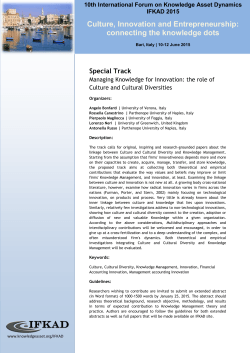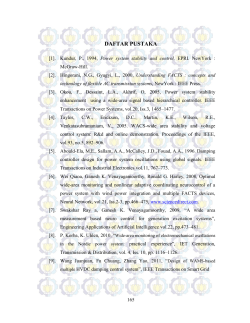
Genetically Engineered Food
FOOD Genetically Engineered Food: Human Health Risks )DFW6KHHW-DQXDU\ D espite the U.S. Food and Drug Administration's (FDA's) approval of many genetically engineered foods, questions persist about the safety of eating them. Safety concerns should result in a halt to all sales of genetically engineered foods until these questions are addressed. At the very least, consumers should have the right to know if the foods they are buying and eating have been genetically engineered. GMO crops are engineered by transferring genetic material from one organism into another to create specific traits, such as making a plant resistant to treatment with herbicides, or enabling a a plant to produce its own pesticide to repel insects.1 Currently, most GMO food crops are genetically engineered to produce a soil bacterium called Bacillus thuringiensis (Bt), which repels insects or allows the crop to withstand treatment with an herbicide, such as glyphosate (often sold as Roundup.)2 Although the FDA contends that there is not sufficient scientific evidence demonstrating that eating GMO foods leads to chronic harm,3 the agency's process for evaluating the safety of these controversial new foods is completely inadequate. GMO varieties became the majority of the U.S. corn crop in 2005 and the majority of the U.S. soybean crop in 2000.4 The potential long-term risks from eating genetically engineered food are unknown. GMO corn and soybeans are the building blocks of the industrialized food supply, ending up in products ranging from livestock feed to hydrogenated vegetable oils to high-fructose corn syrup. Companies submit their own safety testing data, and independent research on GMO foods is limited because biotechnology companies prohibit cultivation for research purposes in the restrictive licensing agreements that control the use of these patented seeds.5 Some of the independent, peer-reviewed research that has been done on biotech crops has revealed troubling health implications. A 2009 International Journal of Biological Sciences study found that rats that consumed Roundup Ready corn for 90 days developed a deterioration of liver and kidney functioning.6 Another study found irregularities in the livers of rats, suggesting higher metabolic rates resulting from a Roundup Ready soybean diet.7 Research on mouse embryos showed that mice that were fed Roundup Ready soybeans had impaired embryonic development.8 A two-year feeding study done by independent scientists on 200 rats showed that rats fed Roundup Ready GMO corn developed more mammary tumors, had severe liver and kidney damage, and had a higher incidence of premature death.9 Even GMO livestock feed may have consquences down the line for consumers of animal products. In a study published in 2006, Italian researchers discovered biotech genes in the milk produced from dairy cows fed a GMO diet, suggesting the ability of transgenes to survive pasteurization.10 Meanwhile, a 2012 Journal of Applied Toxicology study revealed that Bt toxins present in GMO foods might affect human tissue at the cellular level, especially when combined with pesticides associated with GMO crops, such as Roundup.11 The FDA has no effective way to track adverse health effects in people consuming GMO foods. And because there is no requirement that food containing GMO ingredients be labeled,12 consumers do not know when they are eating these ingredients. Glyphosate Risks Not only are herbicide-resistant crops potentially dangerous to eat, but their production drives the escalating use of agrochemicals. Monsanto's herbicide Roundup is one of 750 U.S. products containing the active ingredient glyphosate, the safety of which has been disputed for years.13 Glyphosate is a non-selective herbicide used widely in large-scale agriculture, forestry and industrial weed control, and in lawn and garden care.14 Evidence suggests that glyphosate may pose animal and human health risks. Nevertheless, glyphosate use on Roundup Ready crops has grown steadily, with application doubling between 2001 and 2007.15 Risks associated with this herbicide include: · · · · Cell Toxicity: Glyphosate exposure causes cell damage and even cell death. A 2009 study published in Chemical Research in Toxicology found that glyphosate caused DNA damage to human cells even at lower exposure levels than those recommended by the herbicide's manufacturer.16 An Environmental and Molecular Mutagenesis study found that Roundup induced the presence of mutations in mouse kidneys and livers.17 Additionally, in vivo studies on human cells have demonstrated the genetic toxicity of a metabolite of glyphosate, AMPA.18 Carcinogenicity: Inhalation of glyphosate poses a long-term cancer risk for humans, “since cancer may originate from a single cell several years or decades after the initial stress.”19 This is supported by research indicating that glyphosate may lead to “genetic instability,” which can trigger the onset of cancer.20 Agricultural workers who apply glyphosate to crops have an 80 percent increased risk of developing melanoma, according to studies.21 Neurotoxicity: Glyphosate exposure can impair the nervous system as well. A 2002 Environmental Health Perspectives study showed a significant correlation between glyphosate and adverse neurodevelopmental effects.22 One man who sustained acute glyphosate exposure developed symptoms of Parkinson's disease only 30 days after the accident, possibly due to the neurotoxicity of the herbicide.23 Endocrine Disruption: Several studies link Roundup with endocrine disruption. A 2010 study published in Chemical Research in Toxicology found that glyphosatebased herbicides caused highly abnormal deformities and neurological problems in vertebrates.24 A Texas Tech University study showed that Roundup inhibited mouse steroid production.25 Further research has shown that Roundup also has a negative impact during fetal development in rats and on human embryonic cells.26 Another study showed that glyphosate concentrations 100 times lower than their recommended agricultural use disrupted endocrine enzymes in human placental cells.27 GMO Crops Speed Up the Chemical Treadmill Ubiquitous application of Roundup has spawned glyphosate-resistant weeds, a problem that is driving farmers to apply more toxic herbicides, like 2,4-D and Dicamba.28 The chemical 2,4-Dichlorophenoxyacetic acid (2,4-D) once made up half of the herbicide mix known as Agent Orange.29 There is concern regarding 2,4-D's endocrine disruption potential and its effects on development.30 Rats exposed to 2,4-D exhibited depressed thyroid hormone levels, which can affect normal metabolism and brain functioning.31 Studies found that men who applied 2,4-D had lower sperm counts and more sperm abnormalities than those not exposed to the herbicide.32 To help manage weeds and allow farmers to apply 2,4-D generously to crops, the USDA has approved Dow AgroScience’s 2,4-D-resistant corn and soybeans.33 This crop could be dangerous to eat because a metabolite of 2,4-D is known to cause skin sores, liver damage and sometimes death in animals.34 Scientists from the French National Institute for Agricultural Research suggest that, “following 2,4-D treatment, 2,4-D tolerant plants may not be acceptable for human consumption.”35 We Have a Right to Know We currently have a right to know how much fat and sodium are in our food, and a full list of ingredients is available on nearly every box of food sold in stores. But we don't know if the foods we are eating are genetically engineered, despite the risks these foods pose to public health, farmers and the environment. Go to http://www.foodandwaterwatch.org/food/ geneticallyengineeredfoods to learn more. Endnotes 1 Shoemaker, Robbin (Ed.). United States Department of Agriculture (USDA). Economic Research Service (ERS). “Economic Issues in Agricultural Biotechnology.” AIB-762. 2001 at 9. 2 Fernandez-Cornejo, Jorge. USDA ERS. “The Seed Industry in U.S. Agriculture.” AIB-786. January 2004 at 2. 86*HQHUDO$FFRXQWLQJ2ɝFH*$2Ȋ*HQHWLFDOO\0RGLȴHG Foods: Experts View Regimen of Safety Tests as Adequate, but FDA's Evaluation Process Could Be Enhanced.” Report to Congressional Requesters. (GAO-02-566). 2002 at 30. 4 USDA ERS. “Adoption of Genetically Engineered Crops in the U.S.” From Corn and Soybean spreadsheets. Accessed July 6, 2011. Available at www.ers.usda.gov/data-products/adoptionof-genetically-engineered-crops-in-the-us.aspx. Updated July 14, 2014. 5 Pollack, Andrew. “Crop Scientists Say Biotechnology Seed Companies Are Thwarting Research.” The New York Times. February 20, 2009. GH9HQGRPRLV-RHO6SLURX[HWDOȊ$&RPSDULVRQRIWKH(HFWV RI7KUHH*0&RUQ9DULHWLHVRQ0DPPDOLDQ+HDOWKȋInternational Journal of Biological Sciences, vol. 5, iss. 7. 2009 at 716–718. 0DODWHVWD0DQXHODHWDOȊ8OWUDVWUXFWXUDO0RUSKRPHWULFDO DQGΖPPXQRF\WRFKHPLFDO$QDO\VHVRI+HSDWRF\WH1XFOHLIURP 0LFH)HGRQ*HQHWLFDOO\0RGLȴHG6R\EHDQȋCell Structure and Function, vol. 27. 2002 at Abstract. &LVWHUQD%HWDOȊ&DQDJHQHWLFDOO\PRGLȴHGRUJDQLVP FRQWDLQLQJGLHWLQȵXHQFHHPEU\RGHYHORSPHQW"$SUHOLPLQDU\ study on pre-implantation mouse embryos.” European Journal of Histochemistry. 2008 at 263. 9 Séralini, Gilles-Eric et al. “Long term toxicity of a Roundup KHUELFLGHDQGD5RXQGXSWROHUDQWJHQHWLFDOO\PRGLȴHGPDL]Hȋ Food and Chemical Toxicology. Available online September 19, 2012. 3DJDQHOOL$OHMDQGUDHWDOȊ*O\SKRVDWH%DVHG+HUELFLGHV3URGXFH7HUDWRJHQLF(HFWVRQ9HUWHEUDWHVE\ΖPSDLULQJ5HLQRLF Acid Signaling.” Chemical Research in Toxicology, vol. 23. August 2010 at 1586. $JRGL$QWRQHOODHWDOȊ'HWHFWLRQRIJHQHWLFDOO\PRGLȴHG'1$ sequences in milk from the Italian market.” International Journal of Hygiene and Environmental Health. January 10, 2006 at Abstract. :DOVK/3HWDOȊ5RXQGXSLQKLELWVVWHURLGRJHQHVLVE\GLVUXSWing steroidogenic acute regulatory (StAR) protein expression.” Environmental Health Perspectives, vol. 108, iss. 8. 2000 at 769–776. 0HVQDJH5HWDOȊ&\WRWR[LFLW\RQKXPDQFHOOVRI&U\$EDQG Cry1Ac Bt insecticidal toxins alone or with a glyphosate-based herbicide.” Journal of Applied Toxicology. 2012 at Abstract. %HQDFKRXU1HWDOȊ7LPHDQGGRVHGHSHQGHQWHHFWVRI roundup on human embryonic and placental cells.” Archives of Environmental Contamination and Toxicology, vol. 53. 2007 at 126–133; Dallegrave, E. et al. “The teratogenic potential of the KHUELFLGHJO\SKRVDWH5RXQGXSLQ:LVWDUUDWVȋToxicology Letters, vol. 142, iss. 1–2. 2003 at 45–52. )HUQDQGH]&RUQHMR-RUJHDQG0DUJULHW&DVZHOO86'$(56 “The First Decade of Genetically Engineered Crops in the 8QLWHG6WDWHVȋ(Ζ%1R$SULODW *LOODP&DUH\Ȋ&DQFHUFDXVHRUFURSDLG"+HUELFLGHIDFHVELJ test.” Reuters. April 8, 2011. 0LOOHU$HWDO1DWLRQDO3HVWLFLGHΖQIRUPDWLRQ&HQWHU13Ζ& “Glyphosate Technical Fact Sheet.” September 2010 at 1. 15 Aspelin, Arnold L. United States Environmental Protection Agency (EPA). “Pesticides Industry Sales and Usage: 1994 and 1995 Estimates.” August 1997 at Table 8; Grube, Arthur et al. (3$Ȋ3HVWLFLGHVΖQGXVWU\6DOHVDQG8VDJHDQG0DUket Estimates.” February 2011 at Table 3.6. %HQDFKRXU1RUDDQG*LOOHV(ULF6HUDOLQL8QLYHUVLW\RI&DHQ France. “Glyphosate Formulations Induce Apoptosis and 1HFURVLVLQ+XPDQ8PELOLFDO(PEU\RQLFDQG3ODFHQWDO&HOOVȋ Chemical Research in Toxicology, vol. 22. 2009 at 97. 3HOXVR0HWDOȊ33RVWODEHOLQJ'HWHFWLRQRI'1$$GGXFWVLQ 0LFH7UHDWHG:LWKWKH+HUELFLGH5RXQGXSȋEnvironmental and Molecular Mutagenesis. 1998 at 55. 0D³DV)HWDOȊ*HQRWR[LFLW\RI$03$WKHHQYLURQPHQWDO metabolite of glyphosate, assessed by the Comet assay and cytogenetic tests.” Ecotoxicology and Environmental Safety, vol. 72. 2009 at 834–837. 0DUF-HWDOȊ*O\SKRVDWHEDVHGSHVWLFLGHVDHFWFHOOF\FOH regulation.” Biology of the Cell, vol. 96. 2004 at 245–249. 0DUF-HWDOȊ)RUPXODWHGJO\SKRVDWHDFWLYDWHVWKH'1$ response checkpoint of the cell cycle leading to the prevenWLRQRI*0WUDQVLWLRQȋToxicological Sciences, vol. 82. 2004 at 436–442. 21 De Roos, A. et al. “Cancer incidence among glyphosate-exSRVHGSHVWLFLGHDSSOLFDWRUVLQWKH$JULFXOWXUDO+HDOWK6WXG\ Environmental Health Perspectives, vol. 113, iss. 1. 2005 at 49–54. 22 Garry, V.F. et al. “Birth defects, season of conception, and sex of children born to pesticide applicators living in the Red River 9DOOH\RI0LQQHVRWD86$ȋEnvironmental Health Perspectives, vol. 110, suppl. 3. 2002 at 441–449. 23 Barbosa, E.R. et al. “Parkinsonism after glycine-derivate exposure.” Movement Disorders, vol. 16, iss. 3. 2001 at 565–568. 5LFKDUG6HWDOȊ'LHUHQWLDOHHFWVRIJO\SKRVDWHDQG5RXQGup on human placental cells and aromatase.” Environmental Health Perspectives, vol. 113. 2005 at 716–20. 1DWLRQDO5HVHDUFK&RXQFLOȊ7KHLPSDFWRIJHQHWLFDOO\HQJLneered crops on farm sustainability in the United States.” April 13, 2010 at S-3 and S-13. (Pre-Publication Copy). 0DUWLQ0LFKDHO)&RQJUHVVLRQDO5HVHDUFK6HUYLFHȊ9LHWQDPese Victims of Agent Orange and U.S.-Vietnam Relations.” 2009 at 11–13. ΖEUDKLP0LFKDHO$HWDOȊ:HLJKWRIWKH(YLGHQFHRQWKH+Xman Carcinogenicity of 2,4-D.” Environmental Health Perspectives, vol. 96. 1991 at 213. &KDUOHV-HUH\HWDOȊ&RPSDUDWLYH6XEFKURQLF6WXGLHVRQ 2,4-Dichloropehnoxyacetic Acid, Amine, and Ester in Rats.” Toxicological Sciences, vol. 33, iss. 2. 1996 at Abstract. 32 Lerda, D and R. Rizzi. “Study of Reproductive Function in Persons Occupationally Exposed to 2,4-dichlorophenoxyacetic acid (2,4-D).” Mutation Research, vol. 262, iss. 1. January 1991 at 49. *LOODP&DUH\Ȋ86'$JUDQWVDSSURYDOWR'RZȇV(QOLVW*02FRUQ and soybeans.” Reuters. September 18, 2014. /DXUHQW)UDQ©RLVHWDOȊ0HWDEROLVPRI>&@GLFKORURSKHnol in edible plants.” Pest Management Science, vol. 62. 2006 at 558. 35 Ibid. For more information: web: www.foodandwaterwatch.org email: info@fwwatch.org phone: %$ ٔ $" Copyright © January 2015 Food & Water Watch
© Copyright 2025

















